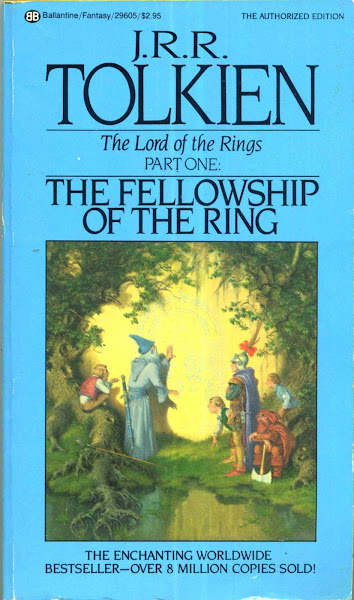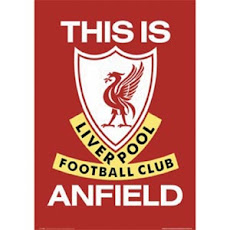
http://www.ateneo.edu/index.php?p=120&type=2&sec=40&aid=6641
An Old Soldier’s Tribute
Fr. Richard O’Brien S.J. and the period of reconstruction
by rick olivares
Old soldiers never die. They just fade away.
General Douglas MacArthur softly bade goodbye when he uttered those words at a joint session of the United States House of Congress upon his recall as Commander-in-Chief of the United Nations forces in Korea.
There’s romanticism to it, but the truth is they don’t fade away; they are remembered forever.

Not long after Fr. Richard O’Brien S.J. passed away after he succumbed to a heart attack on December 6, 1933, the former Marine’s funeral cortege made its way through Plaza Lawton all the way through Taft Avenue to the good Jesuit’s resting place in the La Loma Cemetery.
Thousands – not just the student body, faculty, and alumni of Ateneo but even friends from the nearby colleges and universities -- who knew the good priest for his kind and encouraging heart, lined up the streets of Manila to pay their respects.
It takes an uncommon man to be able to rise above the carnage and hit the ground running.
In the charnel pit of World War I, Fr. Richard A. O’Brien S.J., a Chaplain in the United States Armed Forces, worked the trenches of France with the Marines as they attacked German positions in St. Mihiel and the Meuse-Argonne. He helped administer medical help, said last rites, and carried the wounded to safety. The Marine unit he served in was one of two that was awarded with the French Fourragere citation for gallantry by a unit of soldiers.
Upon his return to the United States after the war, Fr. Richard immediately took back his old position of Athletic Moderator for Boston College. O’Brien was an athlete who excelled in almost every sport save for tennis. Having sworn fealty to the King of Heaven, he still found a way to use sports as a means for developing the youth. In his capacity as Athletic Moderator, the BC Eagles won consecutive football titles on gridiron upon his return.
On August 11, 1927, Fr. O’Brien was appointed the third American rector of the Ateneo de Manila succeeding Fr. Francis Xavier Byrne and Fr. James Carlin. Almost immediately he made some bold and lasting changes.
The bivouac became a staple of the Reserve Officer Training Corps.
He was the guiding force behind the establishment in 1929 of The Guidon, the Ateneo newspaper. Fr. John O’Hara S.J. was named moderator while Manuel Colayco its first editor-in-chief.
The moves were both popular and immediately accepted. But the succeeding changes were any but highly controversial yet in hindsight were the stroke of genius and had lasting repercussions.
The third big change the Jesuit instituted was to discard the old seal of the school that had been around since the Spanish time.

The old seal contained seven elements: two ribbons that bore the Latin motto “Lux in Domino” that meant “Light in the Lord” and the name “Ateneo de Manila.”
The third element was the six-pointed star that to the Jewish people was the Star of David but was also the emblem of the Mother Mary, the Patroness of the school and the country.
Inside the star was the sigil – which contained the fourth, fifth, and sixth elements -- of Manila as was conferred by King Philip II of Spain to the city in 1596. The seal depicted a tower that was a symbol of Spain that stood above a blue portion that signified the ocean of which Espana was a seafaring colonial power. The lower portion featured a sea lion holding up a sword in its right paw.

Fr. O’Brien felt that since the Philippine Islands were under American domain it was time to change the old seal that reflected the new era of the school. But perhaps more importantly, there was nothing in the old seal that recognized the Society of Jesus and its founder St. Ignatius of Loyola.
It was one old soldier honoring an old soldier in Ignatius who was wounded in the Battle of Pamplona.
The new seal kept the circular shape with the two ribbons on the outward rim but the seal of the House of Loyola prominently in the middle but with the Jesuit monogram with “IHS” -- the first three letters of Jesus’ name in Greek – serving as a sunburst that empowers the Society and the school with God’s wisdom.
As Fr. Miguel A. Bernad S.J. wrote decades later, “Sixty years of history were brushed aside” in one swift gesture.
Fathers Joseph A. Mulry and John F. Hurley opposed the change arguing that the old seal was truly Filipino and not Castillan. Moreover, it was discarding the school’s continuity. Along with Fr. Horacio de la Costa, the three formed a panel to study the new seal and how it related to the other Ateneo schools that were put up in Zamboanga, Cagayan, and Naga.
If there was opposition to the change, it was diverted as the old school grounds in Intramuros burned down. With a clarity of mind borne out of the carnage of France, Fr. O’Brien quickly put in effect a transfer to Padre Faura in 1932. It was at this time that the school and the Manila Observatory were reunited in one area as the weather station had moved out of the Walled City earlier as it needed more space.
Even as the changes were made, Fr. O’Brien was always present during sporting events as he never failed to offer an encouraging word or pat on the back not just to Ateneo athletes but those from other schools as well.
Under his stewardship, Ateneo won three consecutive NCAA basketball championships from 1931-33; a feat the school has been unable to duplicate since.
Not soon after the move to Padre Faura, Fr. O’Brien fell ill but he continued his duties once even playing tennis as if he felt that he’d learn the sport before he moves on to the next stage of life.
On Wednesday, December 6, 1933, not long after Fr. O’Brien repaired to his quarters breakfast, the Ateneo Rector suffered a heart attack.
One orderly happened by the Rector’s quarters that had its door open and immediately sought. His two closest confidants, Fr. Hurley and Fr. Henry B. McCullough (who were both Ateneo’s first representatives to the NCAA Board in its inauguration) were summoned.
After the first bell an announcement was made throughout the school that the Rector was dying. Classes were immediately suspended as students, faculty, and administration staff knelt down in prayer. Many kept an eye on the Mission House where the Fr. O’Brien was and when they saw Fathers Hurley and McCullough descend the steps everyone knew that Fr. O’Brien, “the reconstruction Rector” as he was known, had passed away.
Fr. Hurley rang the church bell slowly.
After the funeral procession made its way to Fr. O’Brien’s final resting place in La Loma, Ateneo cadets in white military dress fired a gun salute that was followed by the mournful sounds of taps.
General Douglas MacArthur softly bade goodbye when he uttered those words at a joint session of the United States House of Congress upon his recall as Commander-in-Chief of the United Nations forces in Korea.
There’s romanticism to it, but the truth is they don’t fade away; they are remembered forever.

Not long after Fr. Richard O’Brien S.J. passed away after he succumbed to a heart attack on December 6, 1933, the former Marine’s funeral cortege made its way through Plaza Lawton all the way through Taft Avenue to the good Jesuit’s resting place in the La Loma Cemetery.
Thousands – not just the student body, faculty, and alumni of Ateneo but even friends from the nearby colleges and universities -- who knew the good priest for his kind and encouraging heart, lined up the streets of Manila to pay their respects.
It takes an uncommon man to be able to rise above the carnage and hit the ground running.
In the charnel pit of World War I, Fr. Richard A. O’Brien S.J., a Chaplain in the United States Armed Forces, worked the trenches of France with the Marines as they attacked German positions in St. Mihiel and the Meuse-Argonne. He helped administer medical help, said last rites, and carried the wounded to safety. The Marine unit he served in was one of two that was awarded with the French Fourragere citation for gallantry by a unit of soldiers.
Upon his return to the United States after the war, Fr. Richard immediately took back his old position of Athletic Moderator for Boston College. O’Brien was an athlete who excelled in almost every sport save for tennis. Having sworn fealty to the King of Heaven, he still found a way to use sports as a means for developing the youth. In his capacity as Athletic Moderator, the BC Eagles won consecutive football titles on gridiron upon his return.
On August 11, 1927, Fr. O’Brien was appointed the third American rector of the Ateneo de Manila succeeding Fr. Francis Xavier Byrne and Fr. James Carlin. Almost immediately he made some bold and lasting changes.
The bivouac became a staple of the Reserve Officer Training Corps.
He was the guiding force behind the establishment in 1929 of The Guidon, the Ateneo newspaper. Fr. John O’Hara S.J. was named moderator while Manuel Colayco its first editor-in-chief.
The moves were both popular and immediately accepted. But the succeeding changes were any but highly controversial yet in hindsight were the stroke of genius and had lasting repercussions.
The third big change the Jesuit instituted was to discard the old seal of the school that had been around since the Spanish time.

The old seal contained seven elements: two ribbons that bore the Latin motto “Lux in Domino” that meant “Light in the Lord” and the name “Ateneo de Manila.”
The third element was the six-pointed star that to the Jewish people was the Star of David but was also the emblem of the Mother Mary, the Patroness of the school and the country.
Inside the star was the sigil – which contained the fourth, fifth, and sixth elements -- of Manila as was conferred by King Philip II of Spain to the city in 1596. The seal depicted a tower that was a symbol of Spain that stood above a blue portion that signified the ocean of which Espana was a seafaring colonial power. The lower portion featured a sea lion holding up a sword in its right paw.

Fr. O’Brien felt that since the Philippine Islands were under American domain it was time to change the old seal that reflected the new era of the school. But perhaps more importantly, there was nothing in the old seal that recognized the Society of Jesus and its founder St. Ignatius of Loyola.
It was one old soldier honoring an old soldier in Ignatius who was wounded in the Battle of Pamplona.
The new seal kept the circular shape with the two ribbons on the outward rim but the seal of the House of Loyola prominently in the middle but with the Jesuit monogram with “IHS” -- the first three letters of Jesus’ name in Greek – serving as a sunburst that empowers the Society and the school with God’s wisdom.
As Fr. Miguel A. Bernad S.J. wrote decades later, “Sixty years of history were brushed aside” in one swift gesture.
Fathers Joseph A. Mulry and John F. Hurley opposed the change arguing that the old seal was truly Filipino and not Castillan. Moreover, it was discarding the school’s continuity. Along with Fr. Horacio de la Costa, the three formed a panel to study the new seal and how it related to the other Ateneo schools that were put up in Zamboanga, Cagayan, and Naga.
If there was opposition to the change, it was diverted as the old school grounds in Intramuros burned down. With a clarity of mind borne out of the carnage of France, Fr. O’Brien quickly put in effect a transfer to Padre Faura in 1932. It was at this time that the school and the Manila Observatory were reunited in one area as the weather station had moved out of the Walled City earlier as it needed more space.
Even as the changes were made, Fr. O’Brien was always present during sporting events as he never failed to offer an encouraging word or pat on the back not just to Ateneo athletes but those from other schools as well.
Under his stewardship, Ateneo won three consecutive NCAA basketball championships from 1931-33; a feat the school has been unable to duplicate since.
Not soon after the move to Padre Faura, Fr. O’Brien fell ill but he continued his duties once even playing tennis as if he felt that he’d learn the sport before he moves on to the next stage of life.
On Wednesday, December 6, 1933, not long after Fr. O’Brien repaired to his quarters breakfast, the Ateneo Rector suffered a heart attack.
One orderly happened by the Rector’s quarters that had its door open and immediately sought. His two closest confidants, Fr. Hurley and Fr. Henry B. McCullough (who were both Ateneo’s first representatives to the NCAA Board in its inauguration) were summoned.
After the first bell an announcement was made throughout the school that the Rector was dying. Classes were immediately suspended as students, faculty, and administration staff knelt down in prayer. Many kept an eye on the Mission House where the Fr. O’Brien was and when they saw Fathers Hurley and McCullough descend the steps everyone knew that Fr. O’Brien, “the reconstruction Rector” as he was known, had passed away.
Fr. Hurley rang the church bell slowly.

After the funeral procession made its way to Fr. O’Brien’s final resting place in La Loma, Ateneo cadets in white military dress fired a gun salute that was followed by the mournful sounds of taps.










No comments:
Post a Comment